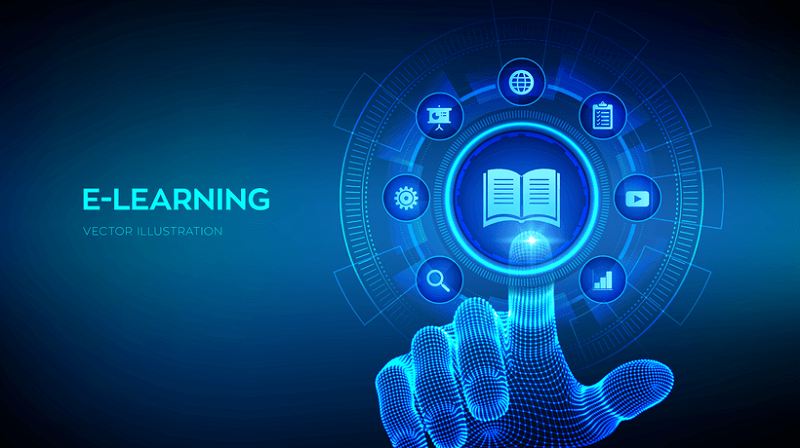Related Articles
For many years, e-Learning has transformed various factors that are significant in the workplace, such as the continuous improvement of collaboration, refining work competencies, and workflow in general. This could mean that as e-Learning programs are being practiced worldwide, its effectiveness in terms of both place and time of learning is sufficient. There are several ways in which e-Learning is applied from primary to university education. It strives to provide an experience of learning that most pupils must find to be both enjoyable and interesting at the same time. But how e-learning works?
E-learning’s integration to the field of education has remarkably imparted an improvement specifically towards the IT skills of the educators in which they pass on their pupils. Over time, many businesses worldwide have advanced to operate digitally, thus a turning point for this generation to signify that this new norm of e-Learning definitely brings both effective and efficient results in the light of the education system. The following points are just a few examples of how e-Learning has influenced education:

Flexibility
The pressure for educators has relentlessly become heavier over time. There is never enough time for these teachers to go on lecturing in classrooms and then improve personal skills of their own. However, with e-Learning, educators are now allowed to be flexible in terms of these factors. Having to easily access lessons online has made it possible to enhance their skills anywhere, given the fact that knowledge could be best-imparted in various environments that are comfortable to the learners. For instance, there could be some required refresher courses or programmes that pupils would need to accomplish. E-learning has made it possible for training to become easily accessible at any time or anywhere it is needed.
Development tools
As a development tool for the education sector, e-Learning has been leaving notable outcomes with how it motivates and supports the workforces in achieving both of their short-term and long-term career goals. Learners are given a chance to see a clear view of their training paths so that they can grasp exercises beforehand through e-Learning portals to progress their skills. Managers of these individuals are now capable of monitoring their growth in terms of learning and give them the necessary recommendations. To be able to achieve the objective of both parties, these learning paths are agreed upon from the beginning of a term through contracts.
Improved communication
E-learning is a technology-based system, hence demands all learners to accustom themselves to refining their IT skills as they utilize this environment. As educators adapt to e-Learning, they become more creative in engaging their pupils with many ways of new teaching styles. For example, there are these amusing ways of presenting words and letters for a pupil who has difficulty in reading, thus making language learning to be way more successful. More example of this is if a pupil has trouble understanding math, there are gamification techniques provided by e-Learning that could aid the learning issues of this pupil and would rather make it an enjoyable one. These various learning styles are made possible by e-Learning to ease a lot of learning difficulties creatively without losing the credibility of the way pupils learn.
Management
To be able to have effective management in the education sector, officials and staff can rely on e-Learning to look into the progress of the workforce which stresses the issues in need of being addressed. There are options as to how these gaps could be resolved as long as it is properly recognised. With e-Learning, training courses and materials are specifically designed and offered wherein staff or employees could easily access and download to improve the discovered skill variances and proceed to improve. Through this platform, information about progress reports of the learning is well-recorded so it is ready to be downloaded anytime if needed. Therefore, if training courses are at hand, the reachability of records of these progress reports is always open for higher management which overall aids the quality of education.
The Differences between Classroom and e-Learning
Convenience
If we talk about e-Learning, then convenience is apparently one of its main positive characteristics. The accessibility of knowledge is considered to be literally everywhere now that e-Learning is existing. Training courses and a lot of information are now within reach at any time of the day, nevertheless, it needs a sense of self-motivation to work out, thus contents within these training courses need to be more than just loaded with data but as well as have to be engaging.
Yet, the practice of e-Learning usually happens at the workplace where learning and development are at hand, therefore a lot of these learnings may occur throughout the work hours.
Alternatively, during lessons inside classrooms, education is usually set on a consistent schedule. Pupils must work and learn altogether as they move forward in parallel speed which could either result positively as they may be motivated more to learn or could result negatively as learning could lack pupils’ interest.
Teaching style
How teachers supervise inside the classrooms is a big factor in how pupils learn. These teachers also have their various ways of teaching style to attain the full potential of their pupils. One example is if they believe that to be able to effectively learn, active reading must be practiced. However, this one approach doesn’t always mean that it suits well for the capability of learning for all the learners, so they also find other ways to be creative in educating.
This is where technology comes to help. For instance, interactive whiteboards and tables are now available to facilitate classroom lessons. These kinds of materials have remarkably aided a lot of methods of how teachers educate, but then again could consume a lot of their time in preparation.
Nonetheless, e-Learning is an approach where learners will be able to find all lessons suitable for their capabilities. There are the audios, videos, texts, and images material wherein all made possible by e-Learning to be able to suit learners and interest them at the same time.
Initially, the objectives and the contents for learning are listed down. Then, it is where content developers work to create all approaches and fundamentals of multimedia needed by the learners. This process enables everyone to accomplish similar objectives, and then enhances enthusiasm and knowledge retention at the same time.
Personalisation
The teaching styles of educators most often than not comes in with the way they personalise it. It may be a hindrance to properly personalise each classroom-based learning considering the differences in learning levels per individual pupil. Teachers could eventually manage to handle these learning variances, although the preparation of the content materials to personalise will be time-consuming.
However, with e-Learning, it is easy to personalise teaching materials. There are the pre and post-learning quizzes initially prepared wherein both the teacher and the learner can appropriately walk through the right path of courses that best suits the pupil’s level. This is a fitting approach as to how educators can personalise teaching all the while to achieve what a learner needs.
Interaction
Communication is probably one of the keys to effective learning. In e-Learning, interactions are made even better by providing immersive approaches such as role-play, gamification, problem-solving, case studies, speakers, storytelling, and branching scenarios. This technique enables learners to be provided with realistic first-person experiences which helps them to understand and practice some anticipated behaviours.
Interacting with one another helps learners to become more knowledgeable to adapt to social circumstances and enhance their learning capacities. They will also have a chance to communicate with their teacher.
Sometimes, it is difficult to approach an educator through e-Learning. Nonetheless, it can provide support forums or video tutorials as an alternative help in case of issues.
On the contrary, classroom-based learning has an easy way of instant communication with its teacher. This way, learners may be able to begin discussions that could aid them in learning more.
Analysis
With the fact that classroom-based learning offers an effective way to easily communicate with teachers, these teachers may find it challenging to work on an in-depth analysis when it comes to analysing the progress of each pupil. As an in-depth analysis of progress will be time-consuming to them, it could result in an inefficient analysation of feedback towards the learners.
To resolve this, e-Learning has made it possible to analyse behavioural insights in an in-depth manner. The information contained in this analysis will be useful for future course development to both the educator and the learner and be able to emphasize knowledge gaps.
Content
One of the most vital factors in a learning environment is the content of the lesson which is provided by the teachers. These contents are usually based on how teachers think is the most preferable for the classroom in general, but would vary on what types of resources are used at hand.
In this case, we can conclude that the teaching style and content of the lesson do not match, rather is based on how the teacher prefers for the class.
One more problem is how fast a learning process could take that it makes it hard for educators to keep information up-to-date consistently. However, with e-Learning, these contents are easy to be updated and be accessed at any time needed.
Since the main interface of e-Learning is online, it makes the need for study materials such as actual books and notes to be lessened. By now, there are a lot of search engines and programmes where learners have the chance to skim through and improve their knowledge.
We at Syncoria could help your education centre in terms of understanding more about the benefits of e-learning in education. We can help you develop an eLearning solution that is made to be user-friendly and effective as we are specialised to deliver a responsible approach in learning. With our solutions, you will be able to record and track significant progress, to have easy access to a lot of information with training courses and events, and to retain well-organized storage of records of the employee’s learning up-to-date.
Contact us today to discuss – we’d be more than happy to help you!




